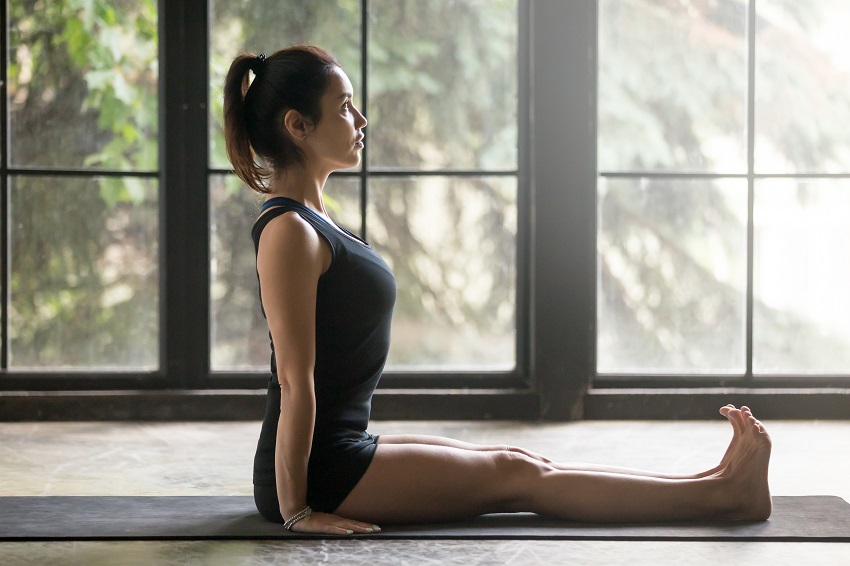How to Practice Staff Pose (Dandasana):
A seated yoga pose that will help with leg extension and spine lengthening is Staff Pose. Although it may appear to be a simple, sitting yoga position, it has engaging qualities to help build strength and stability throughout your body.
The Sanskrit word for Staff Pose is Dandasana (don-dah-sah-nah). You may have heard this term before. Chaturanga Dandasana is a common yoga posture performed in the Sun Salutation vinyasa flow. It means “four-limbed staff pose.” In the case of Staff Pose, you are seated with legs extended to resemble a rod, stick, or staff.
Related Article: A Deeper Look: Mind-Body Connection of Vinyasa Yoga or Flow Yoga

This yoga pose intends to stretch and lengthen your hamstrings, strengthen your back muscles, and improve your posture. It also has a focal component. While seated, your gaze (Drishti) is forward. It allows for deep focus, concentration, and can be used as a meditative posture.
Related Article: Meditative Asanas: Combining Yoga, Meditation, and Pranayama!
How to Practice Dandasana
- Come to a seated position on your yoga mat. Extend your legs out in front of you and sit up as tall as you can. Essentially, this is the posture, but there are some engaging elements, too.
- Then, flex your feet to fully straighten and engage your leg muscles.
- Press your hands into the mat near your hips to help you sit up tall and lengthen your spine.
- Roll your shoulders back and down. Squeeze your shoulder blades together to flex your back muscles. Ensure that your neck is long and your focus is forward.
- As you inhale, feel the breath rise to fill your lungs. Then, when you exhale, engage your abdominal muscles.
- Hold this posture for 5-10 breaths. Experience the full engagement of your entire body.
Related Article: What is the Meaning of Pranayama: Pranayama Breathing Techniques
Modifications for Dandasana
There are a few modifications you can use to assist you in this posture. First, for more comfort, feel free to sit on a folded blanket. It will feel more supportive for your sitting bones and your lower back. It will also slightly tilt your pelvis forward so you’re able to sit up taller.
Secondly, sit up against a wall to help lengthen your back. It will feel more supportive and it will assist with gauging how straight your back is while practicing this posture.
Related Article: Common Wall Yoga Postures For Beginners: Yoga Off The Wall!
Thirdly, you may place a slight bend in your knees while you sit in Dandasana. Continue, though, to flex your feet to keep your leg muscles engaged. Softening the knees will reduce the risk of hyperextending your legs.
How to Prepare for Dandasana
Because this asana has a focus on good posture, a build-up pose to practice is Mountain Pose. In this standing yoga position, you will be able to be more aware of your straight legs, lengthened spine, long neck, keeping your shoulders rolled back, and gazing forward. The same type of focus is practiced in Dandasana.
Introduce this engaging sitting yoga posture to your practice. Dandasana is a well-rounded yoga asana that will improve your posture, lengthen and stretch your hamstrings, and contribute to your focus, concentration, and meditation.




